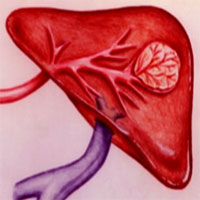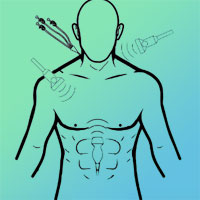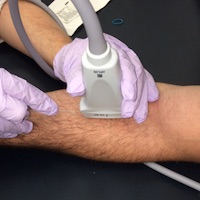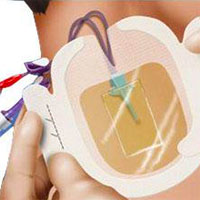Tag: catheter

Catheter-Directed Therapy for PE Built on Fallacy
Tissue plasminogen activator has a notoriously checkered past within emergency medicine, and its controversial use continues with the advent of targeted therapy for pulmonary embolism. Catheter-directed administration of... read more

Reducing Catheter-associated Urinary Tract Infections in the ICU
Patients in the ICU are at higher risk for catheter-associated urinary tract infection (CAUTI) due to more frequent use of catheters and lower threshold for obtaining urine cultures. This review provides a summary of CAUTI... read more

Ultrasound-guided Pleural Effusion Drainage With a Small Catheter Using the Single-step Trocar or Modified Seldinger Technique
Ultrasound-guided pleural effusion drainage by catheter insertion is a safe and effective procedure. The success rate is low when the effusion is loculated and septated. Both the trocar and the modified Seldinger techniques... read more

Trick of the Trade: Bubble Study for Confirmation of Central Line Placement
The safe placement a central venous catheter (CVC) remains an important part of caring for critically ill patients. Over 5 million CVCs are placed each year in the United States. It is crucial to confirm that the central... read more

Ultrasound-Guided Peripheral Intravenous Access
Obtaining intravenous (IV) access is a basic necessity in the emergency department. So what do you do when you are unable to place a peripheral IV, and your go-to external jugular line is not an option? You certainly do not... read more

Comparison of Complication Rates of Central Venous Catheters Versus Peripherally Inserted Central Venous Catheters in Pediatric Patients
Rates of central line–associated bloodstream infection and venous thromboembolism were higher in hospitalized pediatric patients with peripherally inserted central catheters as compared to central venous catheters. Our... read more

Could Ultrasound-guided Internal Jugular Vein Catheter Insertion Replace the Use of Chest X-ray?
The implementation of ultrasound protocols during catheter placement has demonstrated multiple advantages that increase accuracy and allow medical teams to reduce operative time, potential complications, and procedure costs.... read more

Trach Travails: Need-to-Know ED Tricks for Airway Emergencies in Tracheostomy Patients
The outside hospital emergency physician passed a bougie through the patient’s existing metal trach and exchanged the metal trach for a 6-0 endotracheal tube. After the exchange, the ETT cuff was inflated, and the patient... read more

Foleys Aren’t Fun: Patient Study Shows Catheter Risks
A new study puts large-scale evidence behind what many hospital patients already know: Having a urinary catheter may help empty the bladder, but it can hurt, lead to urinary tract infections, or cause other issues in the... read more

Central Venous Catheter – Which Needle?
A prospective randomised trial comparing insertion success rate and incidence of catheterisation-related complications for subclavian venous catheterisation using a thin-walled introducer needle or a catheter-over-needle... read more

Guiding Vascular Access Selection for Intensive Care
Determining appropriateness for vascular access devices limits the risk of complications in critically ill patients. Michigan Appropriateness Guide to Intravenous Catheters (MAGIC) establishes evidence-based indications as... read more

Reduction in Central Line–Associated Bloodstream Infections Correlated With the Introduction of a Novel Silver-Plated Dressing for Central Venous Catheters
Use of SDs is associated with a significant decrease in CLABSI rates in adult ICU patients compared to CHGIS dressings, with an estimated cost savings of US$4070 to US$39 600 per 1000 catheter days. A total of 3189 patient... read more

Successful Strategy to Decrease Indwelling Catheter Utilization Rates in an Academic Medical ICU
Our interventions demonstrated that aggressive and comprehensive indwelling urinary catheters (IUCs) restriction protocol and provider training can lead to a successful decrease in IUC use, leading to a lower IUC utilization... read more

7 Ways To Instantly Increase Your IV Success Rate
Stop making excuses for missed IV starts! Hit the vein on the first attempt with these 7 ways to instantly improve your IV success rate. To Instantly Improve Your IV Success Rate, Improve Your Tourniquet Skill. Oftentimes,... read more




